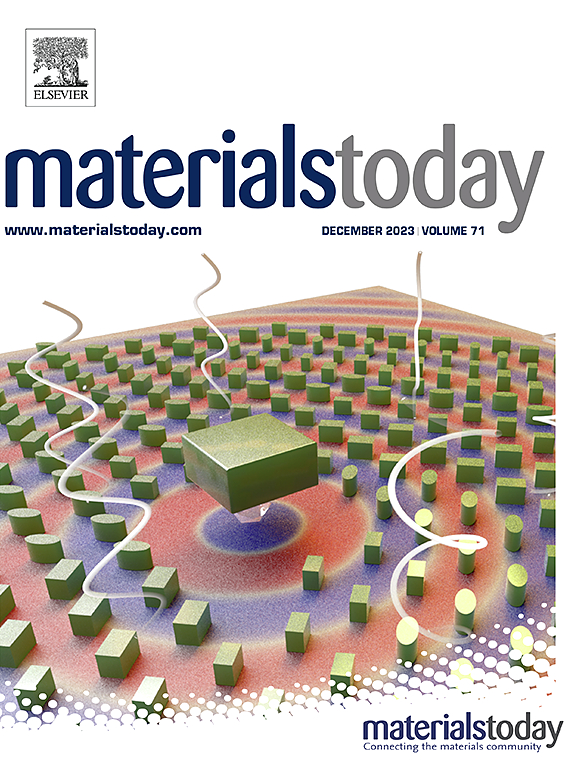Unveiling the structural transformations in glassy solid electrolyte adapted to high-stress cycles
IF 21.1
1区 材料科学
Q1 MATERIALS SCIENCE, MULTIDISCIPLINARY
引用次数: 0
Abstract
Brittleness of glass–ceramic and ceramic ion conductors is considered as a main roadblock for their implementation as electrolytes in solid-state batteries where the fractures often occur due to the pressure exerted by metallic lithium. In this regard, nano- and micro-scale ductility of the solid electrolyte allows reducing such pressure without formation of cracks. Among different types of solid state ion conductors, phosphate invert glasses seem to be promising in achieving such ductility. We report the mechanical behavior of lithium phosphorous oxynitride (LiPON) invert glass probed by static and cyclic nanoindentation. Repeated application of high intensity stress results in densification and shear deformation of material allowing LiPON to accommodate the 22% nominal strain imposed by the nanoindenter without cracking. Ability to do this under repeated loading indicates robustness of LiPON when used in lithium metal batteries under cyclic charge and discharge. Using Raman spectroscopy with unsupervised K-means clustering we reveal pressure-induced formation of units which migrate to the periphery of the residual hardness impressions with cycling resulting in surface morphology of LiPON superficially similar to that of deformed bulk metallic glass.
揭示适应高应力循环的玻璃状固体电解质的结构转变
玻璃陶瓷和陶瓷离子导体的脆性被认为是其在固态电池中作为电解质的主要障碍,金属锂施加的压力经常导致断裂。在这方面,固体电解质的纳米和微尺度延展性允许在不形成裂纹的情况下降低这种压力。在不同类型的固态离子导体中,磷酸盐逆变玻璃似乎有希望实现这样的延展性。我们报道了用静态和循环纳米压痕探测氧化氮化磷锂(LiPON)倒置玻璃的力学行为。反复施加高强度应力导致材料致密化和剪切变形,使LiPON能够适应纳米压头施加的~ 22%标称应变而不会开裂。在重复负载下做到这一点的能力表明LiPON在锂金属电池中循环充放电时的稳健性。利用无监督K-means聚类的拉曼光谱,我们揭示了P2O7单元的压力诱导形成,这些单元随着循环迁移到残余硬度印痕的外围,导致LiPON表面形貌表面上类似于变形的大块金属玻璃。
本文章由计算机程序翻译,如有差异,请以英文原文为准。
求助全文
约1分钟内获得全文
求助全文
来源期刊

Materials Today
工程技术-材料科学:综合
CiteScore
36.30
自引率
1.20%
发文量
237
审稿时长
23 days
期刊介绍:
Materials Today is the leading journal in the Materials Today family, focusing on the latest and most impactful work in the materials science community. With a reputation for excellence in news and reviews, the journal has now expanded its coverage to include original research and aims to be at the forefront of the field.
We welcome comprehensive articles, short communications, and review articles from established leaders in the rapidly evolving fields of materials science and related disciplines. We strive to provide authors with rigorous peer review, fast publication, and maximum exposure for their work. While we only accept the most significant manuscripts, our speedy evaluation process ensures that there are no unnecessary publication delays.
 求助内容:
求助内容: 应助结果提醒方式:
应助结果提醒方式:


